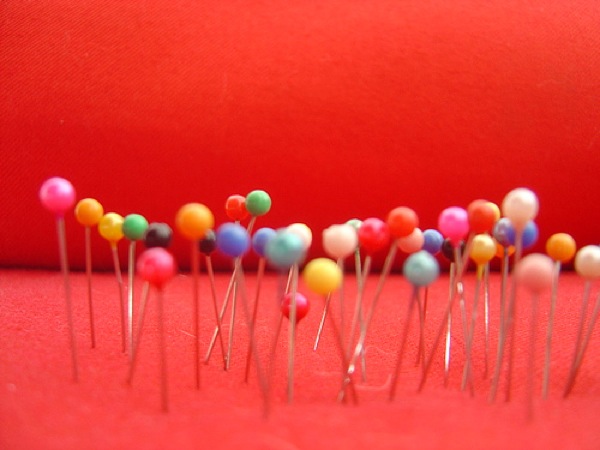
It was bound to happen. Just as brands have tapped influential tweeters and bloggers, they are now buddying up with so-called “Power Pinners.”
Women’s clothing and luxury-lifestyle brand Calypso St. Barth recently announced that it has enlisted Pinterest superstar Christine Martinez, who boasts nearly a million followers on the scrapbooking site, to act as a brand ambassador accompanying the Calypso team to St. Barth next week, where she’ll draw inspiration for island-inspired pin boards that reflect the brand’s style.
Martinez, a fashion blogger, has 43 mostly fashion and design-related boards on Pinterest, like “Vintage and Modern Ceramics” and “Looks I Love.” She already has her first Calypso-sponsored board up, “Packing for St. Barth,” which features beachy Calypso items like straw bags and sandals, all perfect for an island-vacation wardrobe.
“Finding the right Power Pinner for branded content is like dropping your content into an online jet stream,” said GianCarlo Pitocco, strategy director at marketing agency Mr Youth, which wasn’t involved in the Calypso campaign.
Maybe Power Pinners are the new mommy bloggers. There are certainly advantages for brands who have the right content for Pinterest — in other words, brands who have a lot of visual content. Pinterest is easy to use and has a large and rapidly growing audience. Power Pinners give brands fast access to large audiences on a platform that enables the fast and easy sharing of content and generates tons of traffic back to the original sources of the content.
There’s also the fact that like other hot, new platforms, there’s no media model. A brand like Calypso can’t buy ads on Pinterest. It can, of course, set up its own boards. Calypso does have a Pinterest account where it has five boards and only 442 followers. By having Martinez pin Calypso merchandise to her own boards, Calypso will hopefully gain new followers to its own page and more importantly boost sales (because pinned items link back to Calypso’s retail site). This means brands that are on Pinterest — and even ones that aren’t on Pinterest — can pony up with a Power Pinner to get their stuff to the masses.
“Brand managers must ask themselves, ‘If I didn’t work for my brand, would I want to post this picture on a bulletin board in my office?’” explained Pitocco. “That’s why Pinterest is such a natural place for fashion, art and photography.”
There’s also a clear issue with disclosure. The Federal Trade Commission requires that bloggers disclose when they post on behalf of brands, a rule put in force, in part, because of the payola coming the direction of mommy bloggers. It’s hard for a follower of Martinez to know she’s pinning on behalf of Calypso. Aside from her travel and board for her trip from California to St. Barth, it’s unclear what else, if anything, Martinez is getting from Calypso for her participation (aside from more exposure for herself).
Another approach that brands can take besides power Pinner partnerships is contests. Better Home and Gardens has launched a “Pin and Win” contest that calls for users to create their own Pinterest Boards called “My Better Homes and Gardens Dream Home,” with interior and exterior design images from BHG.com. BHG editors will choose 10 finalists with the best board. All finalists will be give $100 and will be featured on BHG’s Pinterest,Facebook, Twitter and Google+ pages, and one grand prize winner will get $4,000. This is another way that brands can encourage consumer engagement on Pinterest.
“Brands that don’t naturally lend themselves to those genres of content will have to get a little more creative or think twice about investing in this platform,” said Pitocco.
More in Marketing

Zero-click search is changing how small brands show up online — and spend
To appease the AI powers that be, brands are prioritizing things like blogs, brand content and landing pages.

More creators, less money: Creator economy expansion leaves mid-tier creators behind
As brands get pickier and budgets tighten, mid-tier creators are finding fewer deals in the booming influencer economy.

‘Still not a top tier ad platform’: Advertisers on Linda Yaccarino’s departure as CEO of X
Linda Yaccarino — the CEO who was never really in charge.





